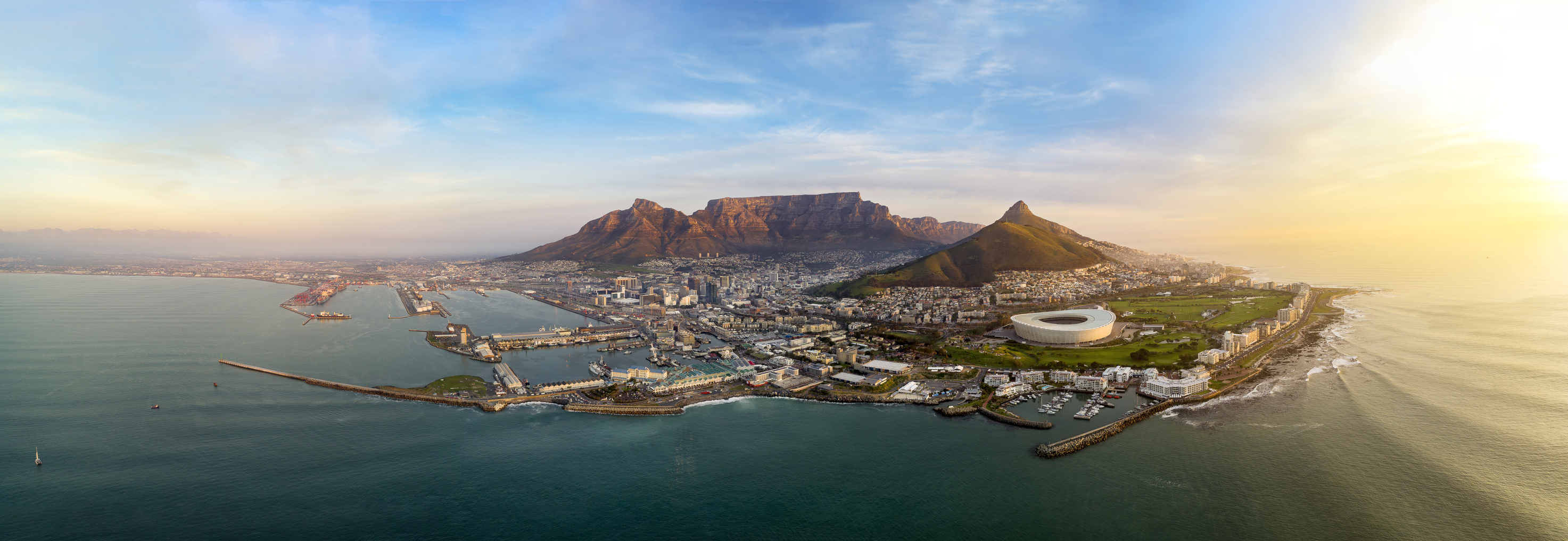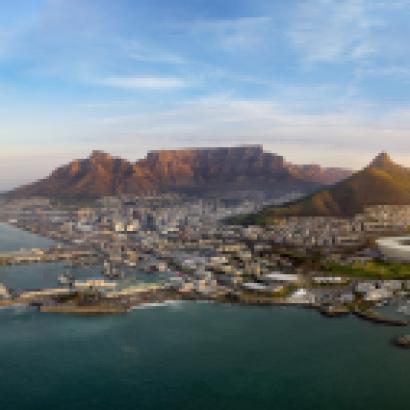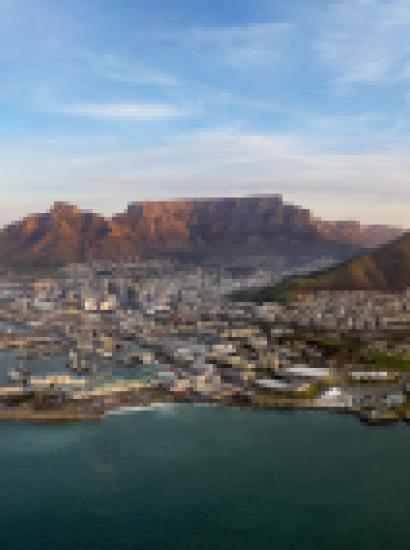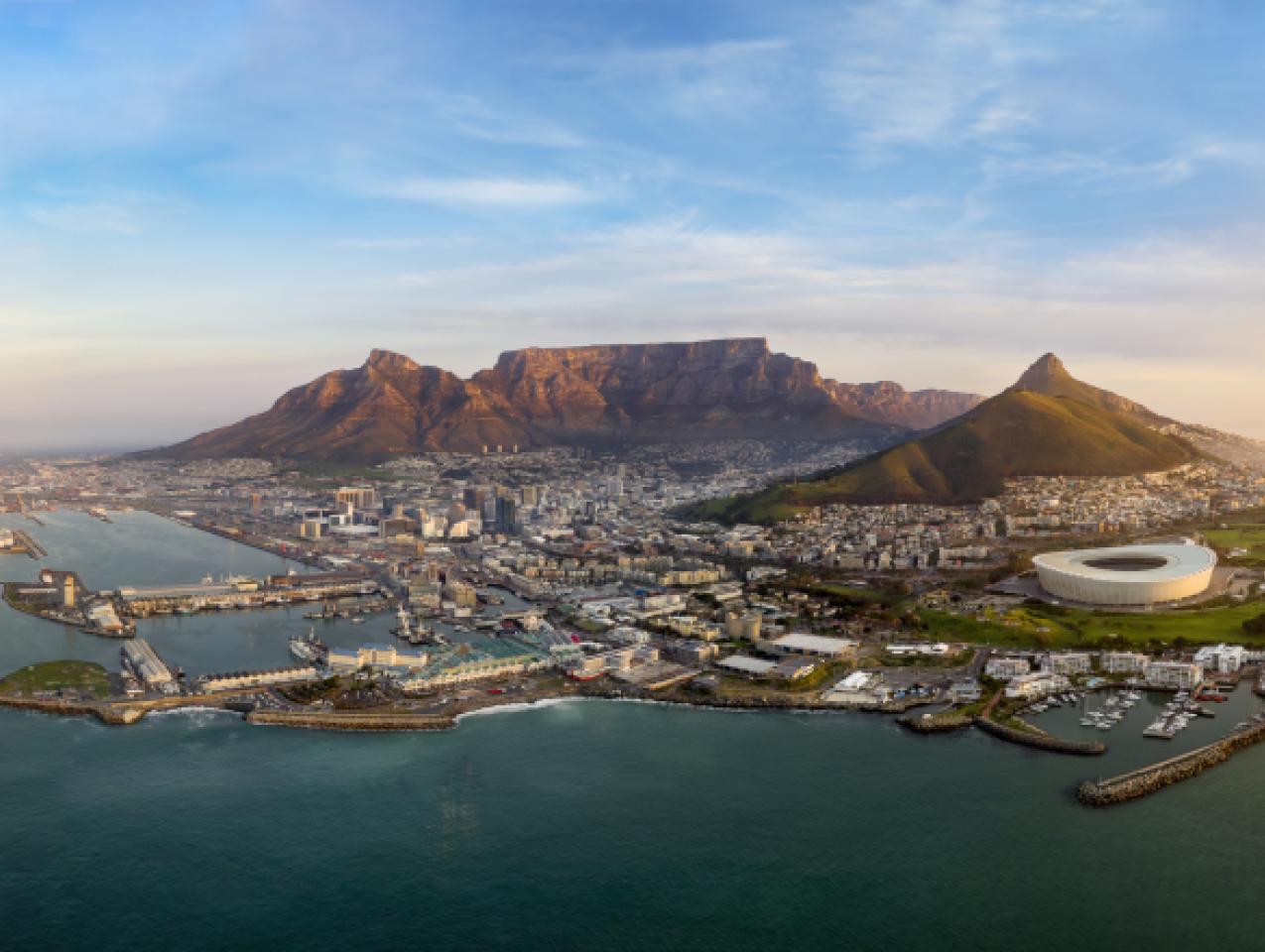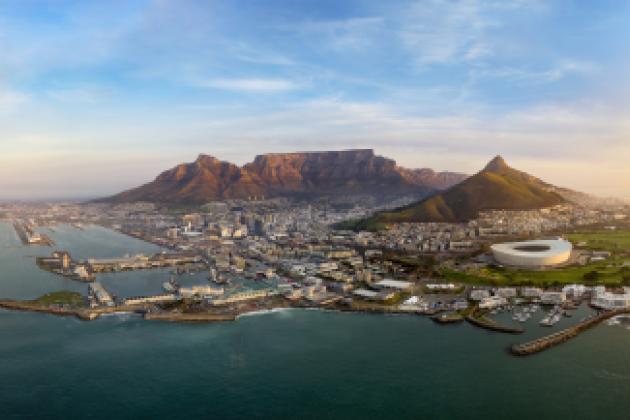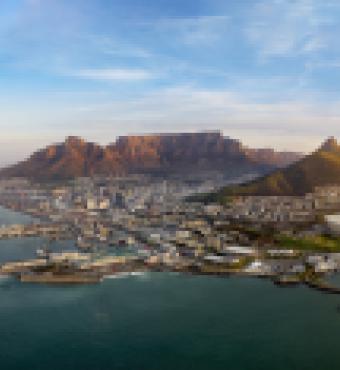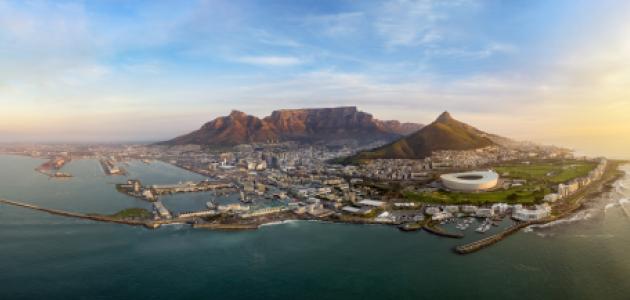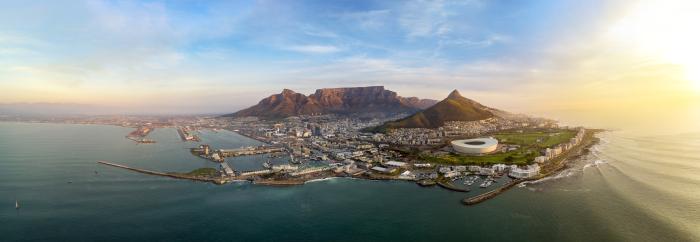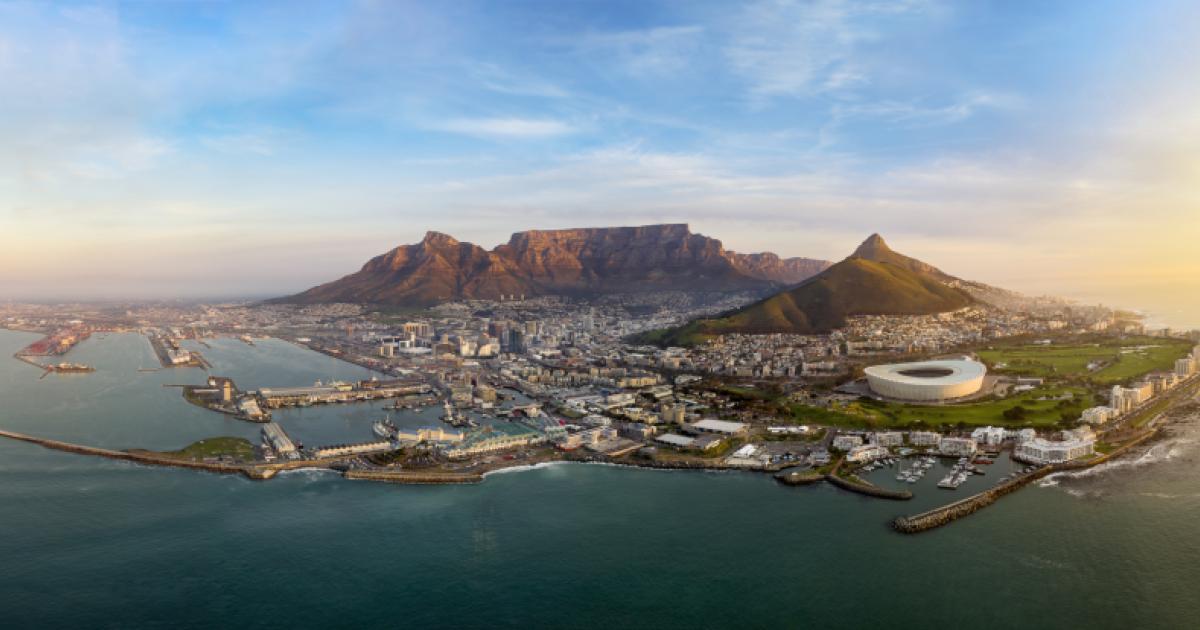The papers and discussion brought into stark relief Africa’s current reality and the dramatic transformations that are being driven by the megatrends of demography, climate, and technology. The roundtable also highlighted the enormous challenges these transformations will present. Together they paint a picture of Dickensian contradictions, with both bad news and good news, and reasons for both hope and deep concern.
The most disturbing news is the extent to which these megatrends, which will be powerful disrupters globally, are destined to have greater disruptive impacts across the African continent. Population and climate arguably pose the most concrete threats to economic sustainability and social and political stability. But, notwithstanding its positive potential, the disruptive potential of technology is no less real and grave.
These are not the only megatrends out there. Two that are certain to compound and amplify the impacts are:
- The spread of extremism, religious and ideological, and its violent expression, which is driven and exploited by both local and external actors, and
- The rise of populism, nationalism, and authoritarianism, which further complicates the challenge of developing rational and concerted responses.
All these trends, both separately and together, will create enormous governance challenges at all levels—national and sub-national, regional, and global—implicating both governmental and non-governmental institutions and structures.
These trends threaten to overwhelm the capacities of governments and other institutions to manage the impacts of the transformations they are driving. In so doing, they could make the most fragile continent in the world even more fragile.
Fragile states suffer from deficits of institutional capacity and political legitimacy that increase the risk of instability and violent conflict and sap the state of its resilience to disruptive shocks. In fragile states, governments lack legitimacy in the eyes of their citizens, and institutions struggle or fail to provide basic public goods—security, justice, served—and to manage political conflicts peacefully. Almost every country in Africa falls outside the “stable” range of the Fund for Peace Fragile States Index, occupying a spot somewhere between “warning” and “alert”.
– State Fragility and the Challenge of U.S. Leadership, U.S. Institute of Peace
The good news is that these possible outcomes are not fore-ordained or pre-determined. The papers and presentations highlight opportunities and potential benefits emerging from these trends. As with the megatrends that preceded them—industrialization, for example—they have the potential to produce enormous opportunities, advances, and benefits. The papers also highlight policies and strategies that could mitigate the most destructive effects of these trends, increase resilience and adaptive capacities of governments and societies, and maximize the prospects for improved economic, social, and political outcomes.
As Chet Crocker makes clear in his contribution, the most critical factor in determining whether these trends will yield positive or negative outcomes is the character and quality of governance—the ability of political institutions to make wise decisions and sound choices. Avoiding disaster and reaping the potential benefits will require thoughtful, focused, and concerted actions, at all levels of governance. Thoughtful and focused because there is a need to ensure that energies, resources, and investments achieve maximum impact. Concerted because the magnitude of the challenges far and away exceeds the capacities of individual actors; they will require responses that go beyond whole-of-government to embrace whole-of-community, both governmental and non-governmental.
George Shultz has rightly described the challenge we face as one of governing over diversity. But it could also be described as governing in adversity!
Climate and Demographics
The demographic and climatic trends described in the papers and further elaborated during the roundtable pose the greatest threats to the economic sustainability of Africa’s 54 countries, as well as to their political and social stability. Their dramatic impacts are compounded and amplified by the ways in which these forces interact with one another. Moreover, the basic trendlines driven by these forces are largely set. The people who will cause the next surge in population growth have already been born; and the climatic forces that will drive climate change over the next 50 years have largely been set by the patterns of the past 50 years.
As Jack Goldstone’s paper underscores, Africa’s demographics are exceptional. Whereas improvements in mortality and economic development has caused fertility rates in Asia and Latin America to drop to about replacement levels (2.1–2.2 births per woman), Africa has the only large regions of the world with fertility rates above 5.
The projected consequences are stunning. Whereas population growth outside Africa is projected to end in this century, Africa’s population is projected to grow from 1.2 billion in 2015, to 2.5 billion by 2050 and 4.5 billion by 2100: from 16% of the world’s population today to 26% by 2050 and 40% by 2100. The dramatic nature of this change is illustrated by Nigeria, whose population is projected to grow from 181 million in 2015 to 411 million in 2050 (more than the United States) and 794 million by 2100 (more than Europe).
This projected population growth is driven by high fertility, which is itself a product of economic, cultural, and educational factors. Tropical Africa has a long tradition, for example, of strong extended family structures and high fertility. But the crucial factor for our purposes is the lack of secondary education for girls. When young women are educated, they can exert more control over their own family size. It is the critical factor to reducing fertility.
Population and climate impact one another in numerous ways. Mark Giordano’s paper stresses that, while there is much uncertainty and great diversity, the outlook is for temperatures to rise faster in Africa than global averages. As a result, the continent will likely experience longer, hotter heatwaves, longer periods without rain, and more intense precipitation when it does fall, with negative consequences for arable land and agricultural yield. One consequence is that climate-related migration pressure will likely increase the movement of people from farms to cities due to diminished agricultural opportunities. Migration out of Africa will likely have a small impact on Africa’s population, but the implications for receiving countries (namely in Europe) could be substantial, and politically explosive.
There will also be significant health impacts due to changes in the extent and location of disease vectors such as mosquitos and the increased threat of diseases that spread from animals to humans. These impacts will in turn have consequences for both life expectancy and the quality of the labor force, not to mention healthcare costs.
Satisfying the energy needs of this growing population will cause carbon dioxide emissions and air pollution to rise, which can be moderated if Africa turns to its plentiful wind, solar, hydro, and uranium resources. The continent’s natural gas can also play a transitional role, especially where it can displace coal and oil or indoor biomass burning.
Climate and Conflict
In his paper on climate, Mark Giordano demonstrated scholarly prudence and caution about asserting a causal connection between climate change and conflict. However, even without drawing a direct connection—and from the perspective of one who has lived on and visited the continent over the past forty years—we can already see examples of a nexus between climate and conflict. It is especially evident in the Sahel, where the steady decline in arable land was a major contributor to the conflict that erupted in 1989 between farmers and pastoralists in the Senegal River basin, which escalated into a larger conflict between Senegal and Mauritania. It also exacerbated the inter-clan conflict that led to the civil war and ensuing famine in Somalia in the early 1990s.
For another example, over the past half century, Lake Chad has shrunk by over 90%, while the population living around the lake has nearly doubled, from 17 million to almost 30 million. The resulting scarcity and unequal distribution of natural resources have fueled instability and violent conflict throughout the Lake Chad Basin, which includes Northern Nigeria. Meanwhile, BBC World has documented the increasingly volatile swings between droughts and floods in Northern Mali which are inflicting lasting damage on crops and livestock, exacerbating tensions between farmers and herders from different ethnic groups.
Demography and Economics
Africa’s population growth threatens to outpace the capacity of governments to manage and mitigate the social and political impacts, as well as some projections of the continent’s potential economic growth. A growing gap between population growth and economic growth could also be accompanied by growing income inequality, with wealth increasingly concentrated in the hands of small economic and political elites. As has been observed elsewhere through this project, automation of manufacturing can increase the returns to invested capital over labor, which could cause the small economic and political elite of Africa to get even richer. As this happens, it will be important to find other ways for these technologies to make the poor richer, too.
Africa will have an excess of young workers, who will be in short supply in the rest of the world. After 2040, working age populations will shrink everywhere in the world except sub-Saharan Africa. If education does not improve (high school completion rates are 31% for men and 24% for women), most African youth will not be able to compete with workers in South Asia or North Africa.
Despite this dramatic population growth, Africa will remain the world’s least densely populated continent. The crisis that looms is one that arises from the disconnect between the combined impacts of population growth and climate change on the one hand and the lagging productive capacity to educate, feed, house, and care for the continent’s rapidly increasing population on the other.
Technology and Economics
With a growing middle class, Africa is becoming an attractive investment destination, particularly for the United States and China. Private investment and remittances both exceed development assistance.
As Andre Pienaar describes in his paper, Africans are embracing mobile technology as an enabler for greater education, access to services, and improvements in people’s lives. African mobile internet penetration (35%) is below the world average (54%) but growing rapidly. The technology sector accounts for an increasing portion of the growth in African economic output (Nigeria, Kenya). These activities have facilitated the growth of informal markets of citizens serving the needs of citizens, and mobile money transfer systems have facilitated payments for goods and services, creating new livelihoods. Supported by the growth of telecommunication and internet access across Africa, services make up 53% of GDP, with services exports growing six times faster than merchandise exports.
Opportunities exist to use technology to improve agriculture and manufacturing. Agriculture employs 60% of African workers and produces nearly one-third of its GDP. Improving productivity of food production and processing will be necessary to support growing populations while coping with the effects of climate change, disease, and drought. Manufacturing represents another third of African GDP. As Tony Carroll notes, the focused application of artificial intelligence (AI) has the potential to improve productivity and overall production in both sectors.
Internet connectivity provides young entrepreneurs access to information, partnerships, and capital, but many countries struggle with poor communications and internet infrastructure. Prospects for the technology sector are also adversely affected by education shortfalls, especially at the secondary school level, and by the fact that educated professionals leave Africa for higher paying jobs and better quality of life elsewhere.
Prospects are further dimmed by serious institutional and governance deficits. Capital markets are weak. Government reform is needed to establish predictable and transparent investment environments, which are also critical to the development of the technology sector. Historically, we have seen, in Africa and elsewhere, concerted resistance from established institutions—e.g., state telecoms monopolies—to policy and legal reforms that would undermine their positions, market control, and revenues. That resistance to change is almost always aided and abetted by governments and political elites that also benefit from existing monopolistic regimes and which may also feel particularly threatened by these new technologies and their potential political uses. The papers point to notable exceptions where the technology sector has shown impressive growth. Kenya, despite its other serious political and governance issues, appears to be one example. It would be helpful to have a better understanding of why that is so. Meanwhile, in Sierra Leone the literal collapse of the state created space for the expansion of cell phone technology.
Sub-Saharan Africa remains the most under-connected region of the world. What little trade there is with the rest of the world remains in raw commodities, mostly agricultural and mineral products. Intra-Africa trade remains small; favors manufactured and consumer goods; and is limited by weak physical and human infrastructure, small individual country markets, tariffs and other barriers, absence of trade finance, currency risk, corruption, and rent-seeking, and civil disruption. Technology alone cannot solve these problems.
Technology and Governance
Access to the internet by Africa’s youthful and urbanizing population provides information and power to individuals and groups, which can be used to make governments and markets more transparent and accountable and institutions more responsive to citizens’ needs. But it has also made it easier for networked activists (and criminal, trafficking, and terrorist networks) to overturn fragile African states. This in turn can increase the determination of leaders to seek tools of political control.
Mobile internet technology is being used to support peace, for example by amplifying messages of unity and cohesion over division and discord, enabling peaceful and transparent elections, and countering the use of social media for recruiting by terrorist groups. But it is also being used by indigenous actors to sow discontent, manipulate public opinion, stoke racial and ethnic tensions, and discredit and delegitimize political leaders and governing institutions.
Increasingly, technology and social media are also being employed by external actors. China is making major investments in technology, intentionally aligning state interventions with those of the Chinese private sector, including giants Huawei and Alibaba. With those investments comes influence, and questions about how that influence will be used and to what ends. Chinese companies affiliated with the Communist Party of China are building and managing the transition from analog to digital broadcasting in much of Africa. Meanwhile, there is evidence that Russia is using the same tactics it has deployed elsewhere to manipulate elections and public opinion. Andre Pienaar is not alone in his concern that Africa is becoming the arena for a global contest between digital democracies and digital autocracies.
Governance and Everything
To quote Chet Crocker, “In Africa, as in every region, it is the quality and characteristics of governance that shape the level of peace and stability and the prospects for economic development. There is no more critical variable than governance, for it is governance that determines whether there are durable links between the state and the society it purports to govern.”
In the relatively new African nations, the challenge for leadership is to build a social contract sufficiently inclusive to allow effective governance over diversity. In addressing this challenge, Africa starts out with a significant deficit in the form of weak social compacts between states and societies, which is not surprising given the continent’s colonial and Cold War history. Governments that have come to rely on foreign counterparts and foreign investment in natural resources, rather than domestic taxation, have weaker connections to their citizens.
Building more inclusive governance systems and political processes becomes infinitely more difficult when the landscape of who needs to be included is changing or expanding rapidly and dramatically. The youth bulge has revolutionary potential, with implications for political and social stability and the potential for conflict. The differential impacts of these changes on different regions, sub-regions, and groups only add to the difficulty of managing them.
These changes and the other challenges presented in these papers place extraordinary burdens on Africa’s leaders. It is worth recognizing that human agency – the leadership of men and women in official and non-official roles – will be at least as decisive as the abstract variables and vectors described in these studies. Wise leadership is central to the building of inclusive governance. Africa’s external partners bear a parallel responsibility to support wise leaders and to nurture the institutional legacies they help create.
Global and Regional Influences
African governments and institutions will not be able to overcome these challenges and deficits on their own. They will need outside help.
External actors, however, seem increasingly incapable of (or opposed to) exercising leadership and mobilizing global capacities in this area. Traditional sources of leadership—the United States and Europe—are preoccupied with their own internal governance crises and challenges. At the same time, global trends favoring populism, nationalism, and authoritarianism are undermining respect for and promotion of democratic values and good governance. In consequence, global institutions (namely the United Nations) are further weakened and marginalized in their ability to act and exert influence.
Meanwhile, the rise and growing engagement of non-Western international actors (e.g., China, Russia, Turkey, Iran, and Saudi Arabia) are exacerbating governance challenges. Behaviors of some major external actors, such as China, may contribute to short-term improvements but over the longer term will constrain growth possibilities and exacerbate economic and social dislocations.
The global context is further shaped by a larger security dynamic: the concern over global terrorism. Cold War considerations led governments to prioritize security considerations over issues of good governance and to overlook—or worse—the flaws of those African political leaders deemed to be important in the confrontation between East and West. An eerily similar dynamic is at work with respect to the “Global War on Terrorism,” with Western governments inclined to downplay the extent to which support for the activities of African security forces, and the governments that nominally control them, exacerbates governance issues. There is also the question of whether Western assistance, however well-intended, serves to support rather than reform flawed governance systems.
The global pushback against liberal governance norms has consequences in Africa, as governments act to close the space for civil society to operate. Non-western centers of power and great power polarization reduce western influence and provide opportunities for African states to pursue courses independent of western preferences and to move toward authoritarian, state capitalist policies.
It is too soon to tell whether states can evolve toward inclusive agendas or face fundamental tests of strength between social and political groups. Success could depend on developing the economic and financial resources required for including various social groups and demographic cohorts.
If a critical mass of leading states (such as South Africa, Nigeria, Kenya, Ethiopia, Cote d’Ivoire, Algeria, and Egypt) head in a positive direction, they will pull some others along. If more leaders practice inclusive politics, the outcomes could be better. The reverse is also true. If the abolition of term limits, patrimonialism, and kleptocracy become regional norms, it will be harder for better governed states to resist the authoritarian trend.
One positive force that must not be ignored or underestimated, and which may ultimately determine the future, is the growing popular demand for better governance and accountability, a trend affirmed by the continent-wide polling of AfroBarometer. The question is how best to enable and empower civil society to demand and measure governmental accountability.
Finally, as one insightful roundtable participant pointed out, it is unrealistic to expect a revolution in governance in the near term. For the foreseeable future, good governance will remain the rare exception rather than the norm. Therefore, it is important to consider what can be achieved in an imperfect governance environment. Bangladesh offers one example. Kenya may be another.
“What is To Be Done?”
One cannot read the papers in this volume and not come away with a powerful sense of the need for urgent action. There are equally compelling reasons for policymakers in the United States and elsewhere to act: humanitarian concern for the fate of present and future African generations, but also prudent regard for their own national interests.
But, facing such an array of challenges, we must focus our limited energies and resources and prioritize those actions and interventions that seem to be most likely to achieve the maximum impact/effect. With that in mind, the following list is intended to be suggestive rather than definitive.
Education
If there is one cross-cutting theme that rises to the top of the list of priorities, it is the importance of education, with a pronounced emphasis on secondary education, especially for girls. The single most important driver of high fertility rates, especially in sub-Saharan Africa, is minimal secondary education for girls. Expanding access to that education, combined with the employment possibilities that flow from it, is essential to lowering fertility rates and beginning to bend the curve of Africa’s explosive population growth. It is equally essential to preparing Africa’s rapidly growing youth population for productive work and employment, which in turn is a critical underpinning for a stable and civically engaged middle class. The development and expansion of a more educated populace is in and of itself a driver of economic growth, creating both a demand for and an ability to supply new products and services.
Alongside education, increased mobile connectivity and broadband access can help lower fertility rates and empower women. Educated women, primarily urbanites, ultimately will have to lead public education campaigns to reduce fertility and modify family structures. Their efforts will be made much easier if young women with fewer educational opportunities gain access to mobile technology and, with it, greater knowledge and exposure.
In this context, health and health education are critical adjuncts to education, both in changing attitudes and behaviors that affect fertility and in supporting healthier populations. Retaining and attracting the continent’s most talented and highly educated youth may prove to be even more difficult and daunting than educating them in the first place.
Agriculture
There is also a strong consensus on the need to improve the productivity and sustainability of the agricultural sector, given the proportion of the population involved (60%), as well as the need to increase food production to feed the continent’s rapidly growing population. Results of these efforts will depend on closely related interventions, including investments in both physical infrastructure (e.g., roads, transportation, and storage facilities) and institutional infrastructure (e.g., extension services, marketing support).
Issues of land tenure and land reform, which are both legal and cultural, pose a daunting challenge to this effort. No less daunting is the question of how to promote the expansion of industrial agriculture while at the same time protecting and preserving the position and contributions of traditional small farmers. Models do exist for developing complementary relationships between traditional and modern agriculture, but success will depend upon policies based on an understanding of those complementarities.
Technology and Economy
Technology, to include AI applications, could be the critical enabler for expanding educational opportunities and assisting in the adaptation of the agricultural sector. But its potential contribution is much greater, extending to both the industrial sector and commerce in general. The question for both government policymakers and private sector entrepreneurs is how to harness technology in ways that maximize Africa’s growth potential. The answer to that question depends on success in tackling some significant structural and legal problems:
- Breaking down existing governance structures (e.g., state monopolies) that impede growth and the effective and efficient use of resources.
- Policy and investment components to create an enabling environment for technological innovations, including investments in automation and artificial intelligence.
- Addressing the problem of weak and inconsistent laws and law enforcement, as well as reforming data collection and data privacy policies.
- Undertaking or incentivizing targeted investments in infrastructure to facilitate business and commerce, such as wireless and internet infrastructure.
- Integrating and expanding STEM education into primary and secondary schools, as well as on-line platforms.
Two other challenges stand out. The first is reducing barriers to intra-African trade which severely constrain possibilities for economic growth. The second is finding ways to channel remittances and external investments, which together far exceed Official Development Assistance, to productive economic activity. In some areas, the informal economy is the primary source of employment and opportunity. Yet today, external investments, such as the high-profile Chinese initiatives, are directed largely into the formal economy, such as real estate projects, which yield few secondary benefits for broad-based economic growth. Remittances from the diaspora, on the other hand, flow primarily to families and into the informal economy. They are one of the largest sources of foreign resources inflows into Africa and a source of great opportunity for the continent.
Climate
Important steps can and should be taken to prepare for climate change, including: more research on a continent for which there is paltry data on climate trends; more investment in agricultural research to develop such things as adapted seeds and farming techniques (think Israel) and improved soil and water management; the strengthening of health systems; protection of Africa’s forests; and assisting African governments in developing plans and strategies to mitigate and adapt to changes in climate.
There is an urgent need to radically expand and scale the development of clean energy to reduce carbon dioxide emissions. While not mentioned explicitly in the discussion, there is also a need for strategies to protect and preserve Africa’s forests and carbon sinks. These efforts have both local and global benefits.
Governance
The logical place to begin is with support for good actors, governments attempting to move in the right direction (Ghana, Ethiopia, Senegal, Benin) and those political leaders who have demonstrated a commitment to change (Ethiopia, Angola).
Also important is strengthening support for responsible and legitimate civil society actors and using both leverage and incentives to enlarge the space for democratic engagement. That includes arming civil society actors with the technological tools to promote transparency and accountability, both political and economic, as well as enabling the use of mobile internet technology and social media platforms to counter drivers of conflict and promote peace (see the work done by PeaceTech). Better protection of property rights complements these efforts, encouraging entrepreneurship, decreasing hostility to outside influence, and promoting inclusiveness and trust within communities.
Implicit in the roundtable assessments and discussions was a recognition of the need for much greater focus on strengthening the capacities of urban governments and institutions, since it is in Africa’s rapidly growing urban centers that the greatest governance challenges will arise: meeting the needs for basic services (education, housing, employment, health) and creating structures that allow for the management of the inevitable competition, tension and conflict that arise in urban settings.
Better regional and intra-Africa institutions will also be crucial, especially in addressing climate change. Weak regional governance and interstate cooperation has hindered past efforts on water and other resource management, The Okavango Delta is one example, the Mono River project that was designed to serve Ghana, Togo and Benin in West Africa is another. At the global level, it has become increasingly clear that the United States and others will need to develop ways to counter Chinese and Russian exploitation of internet technologies and social media platforms and the havoc they can cause in the realm of governance. At the same time, the United States and other external actors should examine carefully the consequences, intended or inadvertent, of their own polices and interventions.
The issue of Africa’s growing debt burden is brought into sharp focus by China’s irresponsible and exploitative lending practices, which have not only saddled African governments with unsustainable debt burdens but also made them hostage to China’s political wishes and whims. There is an irony in the fact that China is one of the greatest beneficiaries of responsible international lending through the World Bank and other global lending institutions. This underscores the fact that the debt issue is a matter of global governance, one in which international lending institutions, backed by concerned governments, need to intervene to constrain exploitative lending practices.
Efforts to improve African governance must be undertaken with full recognition that success will be halting and slow. Therefore, a major challenge will be finding ways to improve economic and other outcomes in the absence of good governance.
Where national governments prove unresponsive, experience in other parts of the world suggests that important gains can be made by working to strengthen governance at the state, municipal and local levels. In addition, more can be done with mobile technologies to strengthen civil society organizations and their ability to hold governmental authorities accountable, and to expand the space for both political and economic participation. The same technologies and social media platforms can create opportunities to channel remittances and other financial resources into productive, job-creating investments, which can further enlarge the space for non-governmental action. As mentioned above, the experience of Bangladesh suggests that progress of this sort is possible, and Kenya may represent another example.
Conclusion
As grim as the projections and prospects may be, we cannot and must not allow them to become an excuse for resignation and inaction. There is nothing inevitable about these possible outcomes.
However, if good outcomes are to prevail over bad ones, affirmative action and effective management will be required, i.e., good governance. Thoughtful, focused, and concerted interventions can make a difference.
The encouraging news is that we have examples from history of the international community’s ability to respond to major challenges and threats. There is, of course, the oft-cited example of the Marshall Plan, which is regularly invoked as the model for responding to contemporary crises. But a more recent and relevant example is the international community’s response to the HIV/AIDS pandemic, which had Africa at its center.
The awareness of the crisis came in the late 1980s, when epidemiologists were able to document the evolution of the epidemic and its potentially catastrophic implications, not only for health but also for economic growth and social and political stability. Throughout the 90s, the U.S. government, among others, struggled to mobilize an appropriate response, hampered by its own political and cultural controversies taking place within its own borders. It was not until 2001 that a response emerged, the PEPFAR (President’s Emergency Plan For AIDS Relief) authored by the George W. Bush Administration. It was followed shortly by the creation of the Global Fund for AIDS, Malaria and Tuberculosis, which also benefited from strong political and financial support from the Bush Administration. Some twenty years later, sparked by these two global initiatives, the international community has mobilized more than $80 billion to combat the spread of AIDS, much of that directed to Africa. In consequence, HIV/AIDS transmissions have been dramatically reduced and health outcomes greatly improved.
The response to the HIV/AIDS crisis can perhaps serve as both a model and an inspiration for the actions needed today to address the challenges posed by the potentially disastrous megatrends of population, climate, and technology.
There is still time to answer these questions. But the clock is ticking.
George Moose is the vice chairman of the U.S. Institute of Peace and former assistant secretary of state for African affairs. He was a career member of the U.S. State Department, achieving the rank of career ambassador, and serving as ambassador to the Republic of Benin and the Republic of Senegal and as the permanent representative to European Office of the United Nations.







